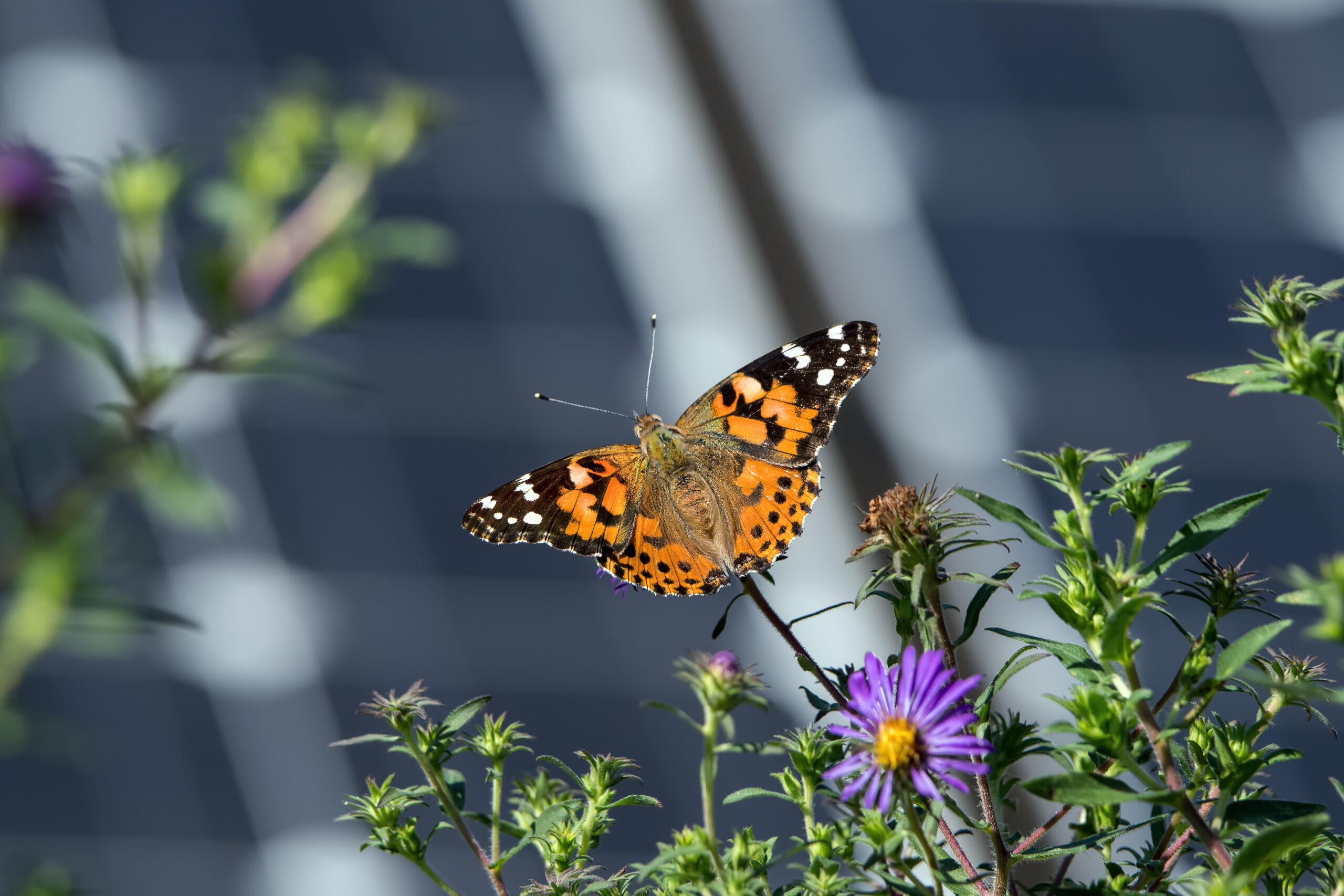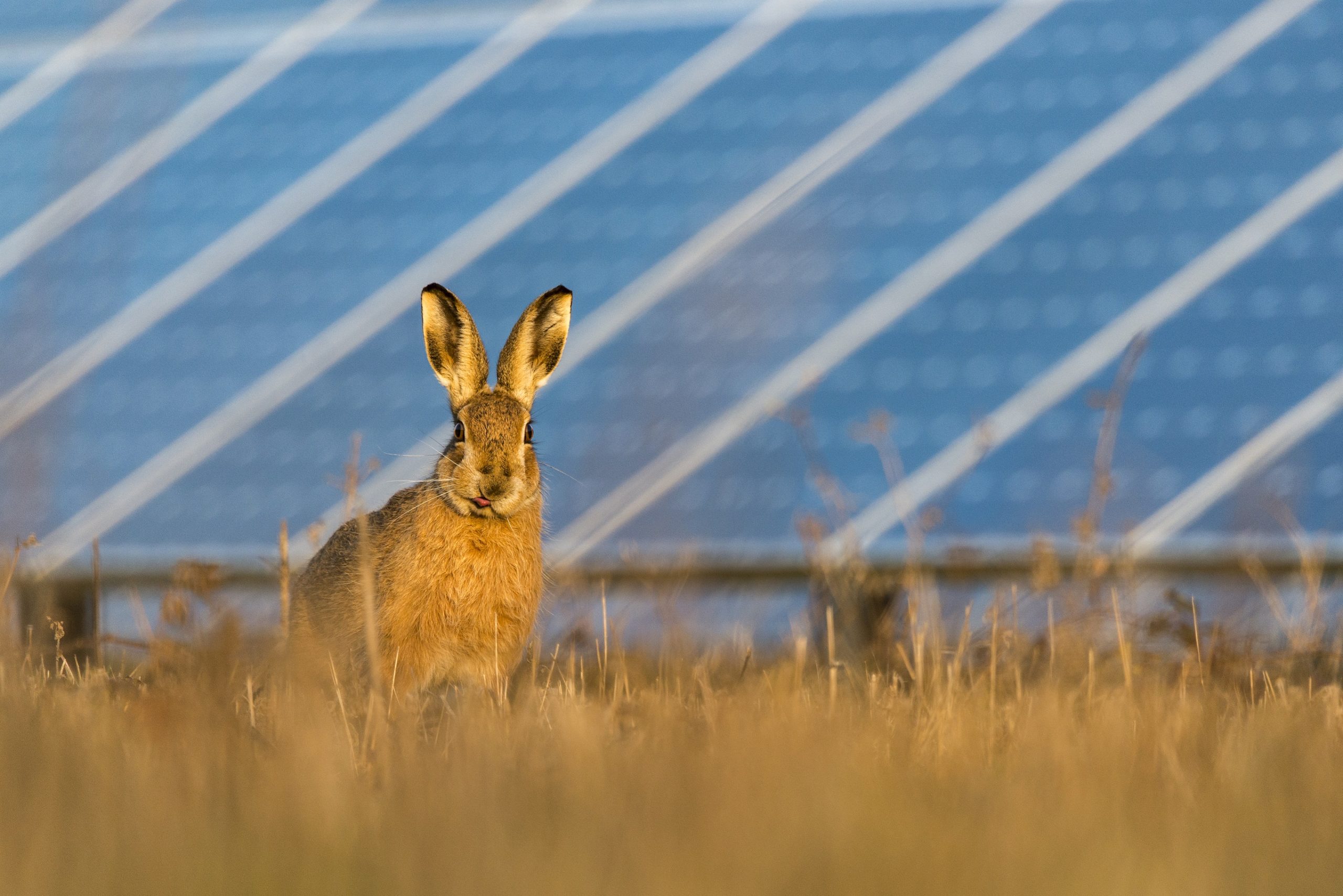


Our planet is grappling with two intertwined ecological crises: climate change and biodiversity loss. In recent decades, the decline of insect populations has been shockingly rapid, followed by dwindling numbers of birds and mammals at an unprecedented rate.
These alarming trends can be attributed to habitat loss and the detrimental impact of pesticides and fertilisers. However, amidst these storm clouds of environmental decline, two rays of hope shine brightly: the rapid acceleration of clean energy sources, led by solar and wind, and the growing momentum behind the nature recovery agenda and the benefits of rewilding.
This blog explores the challenges and opportunities at the intersection of solar energy and nature shedding light on how well-managed solar farms can contribute to climate and nature recovery.
Promoting Climate ad Nature Recovery
Solar farms, if managed responsibly, have the potential to make significant contributions to climate recovery and the restoration of nature. Each kilowatt-hour of solar power produced in the UK effectively reduces the need for gas-fired power stations. Furthermore, when land is set aside from intensive agriculture and managed for nature recovery alongside solar farms, it creates enhanced habitats for wildflowers, pollinators, butterflies, and various bird and mammal populations.
Progress in the Solar Industry
Over the years, the solar industry has diligently built a foundation of good practices and accumulated evidence. In 2014, the UK National Solar Centre produced a best practice guide for land management, and many solar farms incorporated Local Environment Management Plans as part of their planning permission. In 2019, Solar Energy UK (SEUK) published a report showcasing case studies where natural capital was enhanced through initiatives such as wildflower meadows, hedgerows, flood prevention, and wetland features. SEUK also established a Natural Capital Working Group, collaborating with esteemed institutions like Lancaster University, Clarkson Woods, and Wychwood Biodiversity. In 2022, the trade association also published a Natural Capital Best Practice Guide and a standard ecological assessment to underpin an annual national ecological survey – the initial survey results, published in 2023, provide promising insights into the positive impact of solar farms on nature.
Survey Findings
The survey covered 37 individual sites, representing approximately 10% of all solar farms in the UK by area, encompassing around 3,500 acres. Here are some noteworthy findings:
- Plant Species Diversity: On average, the surveyed sites exhibited 32 different plant species, with the most diverse site boasting 52 species.
- Invertebrate Species: The survey identified 66 different invertebrate species, including 11 types of bees and 32 types of butterflies and moths. Notably, nine sites had the small heath butterfly, a species of conservation concern.
- Bird Species: Across all the solar farms, 91 different bird species were identified, including 20 red-listed and 26 amber-listed species.
- Mammals: Brown hares were spotted on 24% of the surveyed sites.
Seizing Opportunities
Still, the challenges we face in addressing the twin ecological crises require us to seize opportunities and work together for a sustainable future. Here are some avenues for positive change:
- Increasing Land for Solar and Nature Recovery: Currently, solar energy in the UK utilises 45,000 acres of land, but this capacity could grow fivefold by 2035 to 225,000 acres. Expanding the land under management for solar and nature recovery is a significant opportunity.
- Joining Up Habitats for Insects and Birds: Solar farms located across the country can play a vital role in creating wildlife corridors alongside protected areas and nature-friendly farming practices, facilitating the movement and conservation of insect and bird populations.
- Advancing Land Management Practices: Through organisations like Solar Energy UK, the solar industry is committed to promoting good land management practices. Raising awareness, sharing best practices, and collaborating with universities and biodiversity experts are essential steps toward improving land management in the industry. Innovative techniques like drone surveys can further support conservation efforts.
- Potential Revenue Streams for Landowners and Managers: Rewarding multi-purpose land use through post-Brexit land use support policies can provide additional revenue streams for rural areas. Increased pollinator populations benefit honey production and support fruit farming and other crops reliant on natural pollination.
- Carbon Storage and Soil Improvement: Solar farms improve carbon storage and soil. Research is underway to explore the carbon sequestration benefits of leaving the soil untouched for extended periods, as practised in solar farms.
Addressing Challenges
While embracing the opportunities, we must overcome several challenges to ensure the success of solar farms in promoting nature recovery and combating climate change, including:
- Public Perception and Media Misconceptions: Addressing concerns about potential harm to local wildlife is crucial. Some groups prioritise preserving rural landscapes over nature recovery and the local economy. Educating the public about the actual benefits of solar farms and dispelling misconceptions is essential.
- Myths and Misinformation: Solar farms may become targets of misinformation campaigns and climate change denial. Combating myths and false narratives through accurate information and engaging with the public and developers is vital.
- Balancing Energy Maximization with Nature-Sensitive Land Management: The solar industry must ensure that best practices are followed, incorporating nature into site designs and allowing for adaptable land management strategies. Engaging local communities, facilitating school visits, and involving nature conservation groups can foster positive relationships and responsible land management.
Join Us in Creating a Sustainable Future
To create a sustainable future, we need collective efforts and collaboration. Here’s how you can contribute:
- Stay informed about the latest developments in the solar industry and nature recovery efforts.
- Engage with developers when a solar farm is proposed in your area. Ask about their land management practices and commitment to promoting nature recovery.
- Share best practice guides and evidence-based reports to raise awareness and promote responsible land management.
- Foster partnerships with local nature conservation groups and support community integration of solar farms.
Together, we can harness the power of solar energy while prioritising nature recovery, paving the way for a sustainable and biodiverse future.